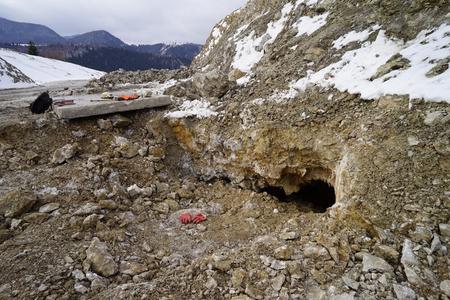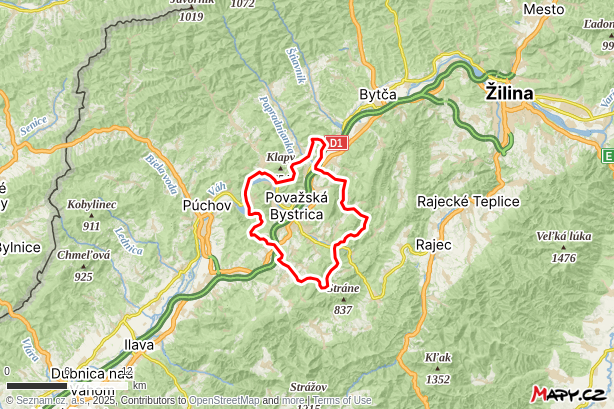In early February, members of the Strážovské Vrchy Speleological Club made an exceptional find in the Strážovské Vrchy Protected Landscape Area, located in the Považská Bystrica district, western Slovakia. The club discovered a new cave containing skeletal remains, believed to be thousands of years old.
"This is a significant discovery. We were surprised because we didn't expect it. We're sure more remarkable things are waiting to be found," said Bohuslav Kortman, president of the club, which has been conducting speleological surveys in the region for over 25 years.
According to Kortman, the caves here are notable not only for their natural beauty but also for the archaeological and paleontological finds they contain.
A helping hand in the heart of Europe offers a travel guide of Slovakia.
Local legend speaks of a cave whose entrance was sealed off by people due to poor air quality inside. Whether this newly discovered chamber is the legendary one particular remains to be seen, and further research will be needed to confirm it. However, no human has likely entered this newly discovered space before. It is likely that other creatures that may have been in the chamber, however.
"We found animal bones there, likely from cave bears, possibly other carnivores, and even a horse or a cow," Kortman explained, suggesting that a fox might have dragged the remains there as well.
The bones were concentrated in a single area.
"These finds could be thousands of years old. For instance, cave bear bones found in the Pružinská Dúpna Cave are over 40,000 years old," Kortman noted. Experts will continue to study the remains.
The chamber likely had an entrance
The newly discovered chamber is about 20 metres long, with side passages extending it to a total of 25 to 30 metres. In some places, the width is up six metres, and height up to three metres. Located relatively close to the surface, the may been available for access in the past through an opening that has since collapsed. The spelunkers made their way into the space through a tunnel from another cave.
"This is my first major discovery. I can hardly believe we finally succeeded, especially at a time when we least expected it. It's like when your kids take their first steps—something you'll remember for the rest of your life," said Dušan Gabriš, who played a key role in the discovery of the new chamber.
"Every cave holds secrets, and sometimes it's a matter of luck and chance. As spelunkers we have certain clues that we follow, and while there were a few in this case, they were ephemeral," added Gabriš, a passionate speleologist.
Water guided their path
To reach the chamber, the team had to dig through a roughly seven-metre-long tunnel. "The cave's character began to change, and we encountered a wall that was different from the others. It was covered in sinter, indicating that water saturated with calcium carbonate had flowed over it, leaving a smooth layer, much like the kind you see in dripstone caves," Gabriš explained, noting that this guided them in the right direction.
Gabriš doesn't believe the newly discovered chamber is the cave mentioned in local legends. He believes that the legends might be slightly off or have been misinterpreted over time.
"It's still a long journey to uncover all the information, and we're piecing together a mosaic from what we have," concluded Gabriš.
©My Považská
Spectacular Slovakia travel guides
A helping hand in the heart of Europe thanks to our Slovakia travel guide, with more than 1,000 photos and hundreds of tourist spots.
Our detailed travel guide to the Tatras introduces you to the whole region around the Tatra mountains, including attractions on the Polish side.
Lost in Bratislava? That's impossible with our City Guide!
See some selected travel articles, podcasts, traveller info as well as other guides dedicated to Nitra, Trenčín Region, Trnava Region and Žilina Region.






